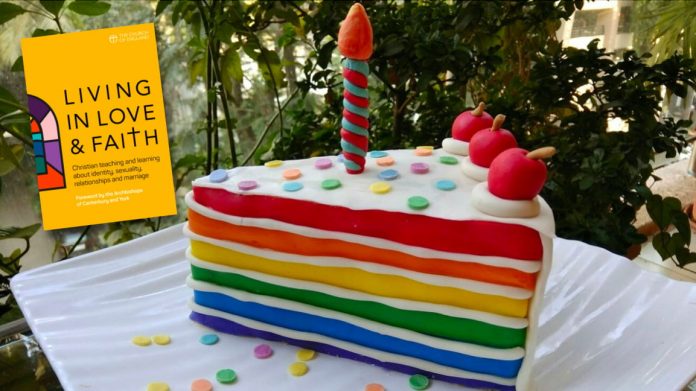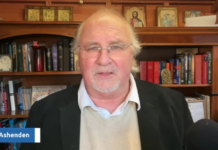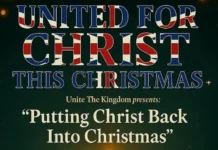Twenty years ago, Archbishop Rowan began his presidential address to the July 2003 York General Synod by asking “Does the Church of England exist?”. He replied that “there are several different ‘Churches of England’” and we need “to find out what it is that makes these diverse ‘churches’ one” because “if we can’t answer this, we are in trouble”.
Questions around diversity and unity are once again coming to a head focussed around the implementation of the bishops’ proposals for Living in Love and Faith (LLF) supported at the February General Synod (which I discussed here). The update on that implementation process to July’s General Synod (GS 2303, to which citations below refer) has been accused of saying nothing with little or no obvious developments reported. In fact, on careful reading, it points towards the serious challenges now facing the church and the range of questions the bishops hope to make decisions on to bring to the extra session of Synod introduced for November.
Ecclesial cakeism?
The bishops identified three areas requiring further work after February—the draft proposed Prayers of Love and Faith (PLF), the new Pastoral Guidance to replace the 1991 Issues in Human Sexuality, and what they termed “Pastoral Reassurance”. That work has now been disbanded—I served on the Pastoral Guidance workstream but write here in a personal capacity—in part because it confirmed what many always suspected: it is impossible to treat these areas as totally separate workstreams. They are intricately interconnected, as the bishops report (para 18, italics added):
In responding to the questions from the Pastoral Guidance group the bishops were asked to give informal steers acknowledging that only once they were able to consider the progress of all three working groups more comprehensively could formal decisions be made.
As the Bishop of London has said in answer to a question about this, the work now needs “to focus on bringing the work of the three workstreams together for ongoing drafting” (Q96, p. 39). The nature and degree of any development in the prayers and the guidance needs to correlate and be coherent. For example, if the church is to permit clergy to bless couples after they enter a civil same-sex marriage then is insisting clergy cannot themselves enter a civil same-sex marriage justifiable? Similarly, the degree of “pastoral reassurance” needed will depend on the degree of development in prayers and guidance.
It is becoming clear that the bishops
- recognise that “the disagreement that exists across the Church of England and within the House and college of Bishops…is not just about the prayers of love and faith but about theology and ecclesiology” (para 2, cf para 27).
- seek “to walk together with a radical Christian vision of inclusion” (para 4 cf para 17)
- are keen to allow, as part of “a generous pastoral response which is loving and celebratory to those who are in life-long monogamous same-sex committed relationships” (para 20), greater plurality of approved practice than at present. This is apparent in the draft prayers. The Guidance may change the patterns of life open to ordained ministers.
- wish to ensure that “application of the Prayers and Pastoral Guidance should not create a disparate and unpredictable approach across the country” (para 19).
- desire “to inhabit a generous theological, ecclesial and pastoral space that holds the Church together in different interpretations” (para 2) of the answers to various divisive questions (see also para 19).
- believe that ‘answers’ to key questions “do not presuppose agreement, or a univocal statement” but require deciding “on the shape of the ‘space’ we agree to inhabit together, and how far that space may stretch to include different perspectives, and what boundaries there may be” (para 16).
- are committed to “upholding the Doctrine of Marriage” (para 20).
The question is whether all this is really theologically coherent or practically possible. Is achieving all these ends not attempting the impossible squaring of the circle? Isn’t it simply proposing an ecclesial form of what has been seen as the political legacy of former Prime Minister Boris Johnson: “cakeism” where “My policy on cake is pro having it and pro eating it”?
What follows examines each of the three areas explored since February in the light of these episcopal goals to discern what might lie ahead.
Prayers of Love and Faith (PLF)
There are three main areas to consider here: the wording of the prayers, the “routes by which the prayers may be authorised (or commended)” (para 12), and “in which situations the PLF will be recommended for use and what conditions may be imposed on them” (para 12).
First, the prayers remain “a suite of resources” which aim “to provide a joyful opportunity to celebrate what is good and holy in a relationship” (para 11c). They are “versatile, varied, and customisable to pastoral context” (para 11a). This may of course create problems on the ground when clergy are unwilling to use certain prayers that couples wish to use. There have been a small number of changes made to the draft prayers (pp. 7-30) in the light of comments from Synod members and bishops. These are generally in a slightly conservative direction and include
- a commitment that “The rubrics guiding the use of the prayers in context will make clear their distinction from the liturgies for Holy Matrimony” (para 11c)
- removal of reference in headings to prayers “for a couple” or “a relationship” and introduction of a bidding prayer referring to the qualities of relationship
- in relation to blessings, “Bless them” becomes “By your blessing”
- only one prayer offered for when rings are worn which is moved to a note and no longer includes “by your blessing”
- Scripture readings no longer include Song of Solomon
- Illustrative sample service does not include prayers for God’s blessing or reference to rings.
Second, there is no longer a commitment to introduce the prayers by means of episcopal commendation for use by local clergy under canon B5. This appears to be in large part because that route makes parish clergy liable to complaints and potential legal action by those who believe the prayers indicate a departure from doctrine. Instead, routes of authorisation are being considered. In a surprising development, the bishops are “particularly weighing up the option of approval by the Archbishops (under canon B4.2)” (para 13) which is very rare and unprecedented for a contentious matter.
Many—including a number of leaders of various networks in a letter, subsequently supported by 22 bishops—are arguing the only proper route, given the subject matter, is the usual process of Synodical scrutiny and approval under canon B2. This would require two-thirds support in each of Synod’s three Houses in order to determine the prayers had consensus and were not indicative of a departure from doctrine. This seemingly technical procedural matter raises important questions as to the sort of church we want to be—the update opens by talking about “inclusive participation” (para 1)—and whether any route other than B2 exceeds the powers of non-Synodical bodies on such a contentious matter and is unconstitutional. I have explored these questions in some detail here (with a summary here).
Third, it originally appeared the prayers might be offered for a wide range of non-marital committed relationships. This is now less prominent (although the still undefined and novel category of “covenant friendship” continues to be highlighted) with more focus on same-sex relationships and an emphasis on these being “demonstrably faithful, exclusive, and permanent” (para 12). How a relationship could prove it meets these three criteria remains unclear. Making a legal status act as the gateway is problematic because the service would then appear to be affirming that status and civil partnerships do not require vows. The most contentious matters here are whether they can be used for sexual relationships other than marriage and/or for those in a civil same-sex marriage.
It would appear the bishops originally thought that the prayers, as they are silent in relation to sexual intimacy or the legal status of the couple, had gained sufficient consensus but this now looks less secure. This is in part because while the prayers may be silent and hence ambiguous, to enable their use in such contexts would require a change in teaching relating to sex and marriage. This is something which cannot be so easily camouflaged, which many are unwilling to embrace, and for which there has not yet been sufficient legal and theological justification. The focus of attention has therefore moved from the prayers to the second area of work which was totally undeveloped back in February but where the bishops perhaps should have begun their discernment –
Pastoral Guidance
The Pastoral Guidance group “highlighted a number of questions where clear guidance and direction is needed from the bishops” (para 17). Two questions are particularly challenging and contentious:
- “what view the bishops would now take on sexual intimacy for couples who have entered into civil same-sex marriages” (this is a subset of the wider question of sexual intimacy in relationships other than holy matrimony)
- “whether clergy should be allowed to enter same-sex civil partnerships or civil marriage” (the former is currently allowed if they are celibate, the focus is therefore more on the latter and to answer it the bishops have to determine what they think somebody is doing when they enter a civil same-sex marriage and how that relates to the doctrine of marriage)
The current answers to these are clear:
- “The Church of England teaches that “sexual intercourse, as an expression of faithful intimacy, properly belongs within marriage exclusively” (Marriage: a teaching document of the House of Bishops, 1999). Sexual relationships outside heterosexual marriage are regarded as falling short of God’s purposes for human beings” (Pastoral Statement 2019, para 9).
- “it would not be appropriate conduct for someone in holy orders to enter into a same sex marriage, given the need for clergy to model the Church’s teaching in their lives” (Pastoral Statement 2015, para 27)
There are, however, signs of new alternative answers being developed.
In answer to the second question, the developing answer appears to be that same-sex civil marriages are simply a legal status, unrelated to holy matrimony. Entering them is therefore not any longer to be viewed as “departing from” (2015 Statement, para 21) church teaching about marriage. This claim, set out in GS Misc 1339, has already been subjected to significant legal critique (notably here) and I have explored it more fully here. If it is to be used as the legal and theological defence for blessing same-sex civil marriages, and perhaps allowing clergy to enter them, then there would appear to be no reason why prayers could not be approved—without, on this logic, any departure from church doctrine on holy matrimony—that are recognised by the state as a means of entering a same-sex civil marriage in a Church of England service (as I have argued more fully here).
This answer also creates problems for the new answer to the first question offered by Archbishop Justin who, like the Archbishop of York when the prayers were published, has recently altered traditional teaching. He did so in these terms: “sexual activity should be within permanent, stable and faithful relationships of marriage as that is understood in each society” (italics added). As Martin Davie has shown, this raises a large number of questions and problems given the variety of ways societies, historically and today, understand and define marriage. In addition, this way of changing the church’s answer to the first question gives a determinative place in a new sexual ethic to “marriage as that is understood in each society” rather than holy matrimony. Civil same-sex marriage is therefore not simply a legal status totally distinct from holy matrimony and church teaching, it becomes a central ethical criterion in the church’s revised sexual ethic.
A further crucial question is how changing the church’s answers to these questions can be consistent with the bishops’ commitment to “upholding the doctrine of marriage” (para 20). As recently as November last year, the Bishop of London, then co-Chair of the LLF Next Steps Group and now Co-Chair of the Steering Group for Implementation, reaffirmed to General Synod that “Canon B 30 does indeed continue to articulate the doctrine of the Church, including asserting that holy matrimony is the proper context for sexual intimacy”. The proposed sharp divide between civil marriage and holy matrimony to detach the former from the church’s doctrine of marriage is also a novel understanding few find convincing. It is noteworthy and encouraging that the bishops have now recognised “the call for additional theological input” and there will be a Faith and Order Commission (FAOC) working group “to consider theological questions arising from the implementation work” (para 5). It is, however, regrettable that this is so late in a fast-moving process and that requests for more theological work, and offers of FAOC involvement, were previously rejected.
The bishops also appear to want to claim that while upholding the church’s doctrine “it should be possible to disagree and inhabit a generous theological, ecclesial and pastoral space that holds the Church together in different interpretations” (para 19) of answers to these two key questions. Here is where the charge of “cakeism” is perhaps most plausible: how is this development possible if there is also a commitment to uphold the doctrine of marriage? It would appear that the doctrine has changed so as no longer to provide the two answers traditionally given but to permit new answers instead. If this is not the case what is now being said? Is it being claimed that the existing answers were never really part of, or logically entailed by, church doctrine (some are attempting to distinguish doctrine from teaching)? Or is it being argued that, although the doctrine is being upheld, “different interpretations of the answers to these questions” are now held to be consistent with it, including answers previously held to be contrary to the doctrine?
The problems of “cakeism” are not only in relation to “upholding doctrine”. They are increased further when it comes to practice and ecclesiology. This move to accept “different interpretations” is being combined with a rejection of “a disparate and unpredictable approach across the country” (para 19) and yet it being “essential that every bishop have their own freedom of conscience” (para 20). There are signs of a growing awareness of the difficulties in holding these commitments together within current CofE structures. This is related to the third workstream addressing the other major question the bishops failed to consider before presenting the prayers in February:
Pastoral Reassurance
In providing pastoral reassurance to enable, if possible, “walking together” and holding to “the principle of living well as a church, generously, with integrity and with respect even across difference” (para 23) the bishops have to address a number of complex scenarios and potentially divisive ecclesial options at mutiple levels of church life (paras 24-25). As Mike Higton has recently argued, it is important that we are honest and realistic about the challenges this presents given the nature of the differences and their impact on people.
It is significant the bishops are now considering what are termed “structural approaches” (which may, or may not, be similar to what some have called “visible differentiation”). They sketch out various tests in relation to these:
- “it is essential that bishops take seriously their collective responsibility to honour a mixed ecology of practices” (para 26)
- “it is also essential that every bishop have their own freedom of conscience” (para 26)
- Structural approaches must be “congruent with the Pastoral Principles” (para 27)
- They must “maximise working together” (para 27)
- They must “seek the Gospel imperative for the Church to be one” (para 27)
Read it all in Psephizo



